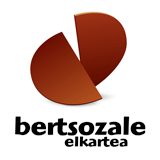Library - View details To know more about this section
Poetry, points, and performance : expanding the scope of slam poetry analysis
 Document:
English.
Online
Document:
English.
Online
- Author(s)
- Losier Chanoine, Cara
- Title
- Poetry, points, and performance : expanding the scope of slam poetry analysis / [author, Cara Losier Chanoine ; dissertation advisor, Kenneth Sherwood]
- Publication
- Indiana University of Pennsylvania, 2018-08
- Subjects
- Poetry slam
- Content
-
Testu osoa
- Other authors
- Indiana University of Pennsylvania ; Sherwood, Kenneth
- Physical description
- 214 or.
- Type of material
- Document
- Eduki mota
- Thesis
- Notes
- Indianako Unibertsitateko doktorego-tesia.
Azalean: A Dissertation Submitted to the School of Graduate Studies and Research in Partial Fulfillment of the Requirements for the Degree Doctor of Philosophy.
Bibliografia: 209-214 or.
This dissertation identifies and illustrates the potential to extend and enrich slam poetry scholarship. Loosely defined, poetry slam is a competition in which a group of poets perform their original compositions in front of a live audience at a designated venue. While extant scholarship has insightfully treated some aspects of slam poetry, the limited scope of this body of work frames the genre in a falsely narrow manner. I argue that expanding the scope of slam poetry analysis can provide a more accurate and complete understanding of the genre. In service of these goals, I develop analytical approaches focused on defining features of slam poetry that have, so far, received insufficient attention, including performative and compositional contexts and the relationships between textual and performative modes.
Because the conventions of slam poetry influence its composition, performance, and reception, I establish these as necessary contextual features to consider in slam poetry analysis, demonstrating this need through an adapted application of Jerome McGann’s discussion of radial reading. I also identify the ways in which text and performance function symbiotically within the slam poetry genre, drawing upon Paul Zumthor’s theory of mouvance to discuss the significance of recomposition and versioning, ultimately arguing that slam poems are composed and recomposed both within and between modes. Inspired by John Miles Foley’s work with slam poetry in How to Read an Oral Poem, I use ethnopoetic transcription as a means of analyzing this inter- and intra-modality as a feature of the genre. Finally, I address the ways in which slam poetry analysis can be enriched through the identification of the genre’s commonalities with other, more broadly studied, genres and traditions. Using the African griot tradition, the Basque bertsolaritza competition, and the European improvvisatore tradition as examples, I illustrate how techniques from related genres and traditions can be adapted and applied to slam poetry to expand the scope of slam poetry scholarship moving forward.
Because the conventions of slam poetry influence its composition, performance, and reception, I establish these as necessary contextual features to consider in slam poetry analysis, demonstrating this need through an adapted application of Jerome McGann’s discussion of radial reading. I also identify the ways in which text and performance function symbiotically within the slam poetry genre, drawing upon Paul Zumthor’s theory of mouvance to discuss the significance of recomposition and versioning, ultimately arguing that slam poems are composed and recomposed both within and between modes. Inspired by John Miles Foley’s work with slam poetry in How to Read an Oral Poem, I use ethnopoetic transcription as a means of analyzing this inter- and intra-modality as a feature of the genre. Finally, I address the ways in which slam poetry analysis can be enriched through the identification of the genre’s commonalities with other, more broadly studied, genres and traditions. Using the African griot tradition, the Basque bertsolaritza competition, and the European improvvisatore tradition as examples, I illustrate how techniques from related genres and traditions can be adapted and applied to slam poetry to expand the scope of slam poetry scholarship moving forward.
1. INTRODUCTION: SLAM I AM ...6
Of Poets and Gladiators ...7
The Rules of the Rebellion ...12
Distorting the Voice ... 15
Opportunities for Growth ...26
2. CONTEXTUALLY FRUSTRATED ...36
Boo, Hiss, Cheer: The Audience as Performative Context ...37
Let the Bodies Hit the Stage: The Importance of Performative Embodiment ...50
Welcome to Thunderdome: The Shared Stage as Context ...70
Closing Thoughts on “Radial-Active” Reading ...86
3. PAGE AND STAGE AS CONJOINED TWINS ...88
Making the General More Specific ...90
With Our Powers Combined: The Role of Ethnopoetics ...98
Slam-scription in Action ...101
Intermodal Mouvance ...127
Recursive Mouvance Between and Within Modes ...128
Reconsidering Recomposition: Movement and Versioning as Subjects of Analysis 144
4. SOMETHING BORROWED:LINKS TO PAST AND PRESENT GENRES ...146
Living History: The Griots ...149
The Observant Orators: The European Improvvisatori ...165
Last Poet Standing: The Bertsolaritza, The Amoebaean Singing Contest,
and Slam Poetry ...182
The Call of the Poet: Inter-performative Responses ...192
Inter-performative Analysis in Practice ...195
Heritage and Analysis ...202
5. CONCLUSION: SO WHAT? ...204
WORKS CITED ...209
Of Poets and Gladiators ...7
The Rules of the Rebellion ...12
Distorting the Voice ... 15
Opportunities for Growth ...26
2. CONTEXTUALLY FRUSTRATED ...36
Boo, Hiss, Cheer: The Audience as Performative Context ...37
Let the Bodies Hit the Stage: The Importance of Performative Embodiment ...50
Welcome to Thunderdome: The Shared Stage as Context ...70
Closing Thoughts on “Radial-Active” Reading ...86
3. PAGE AND STAGE AS CONJOINED TWINS ...88
Making the General More Specific ...90
With Our Powers Combined: The Role of Ethnopoetics ...98
Slam-scription in Action ...101
Intermodal Mouvance ...127
Recursive Mouvance Between and Within Modes ...128
Reconsidering Recomposition: Movement and Versioning as Subjects of Analysis 144
4. SOMETHING BORROWED:LINKS TO PAST AND PRESENT GENRES ...146
Living History: The Griots ...149
The Observant Orators: The European Improvvisatori ...165
Last Poet Standing: The Bertsolaritza, The Amoebaean Singing Contest,
and Slam Poetry ...182
The Call of the Poet: Inter-performative Responses ...192
Inter-performative Analysis in Practice ...195
Heritage and Analysis ...202
5. CONCLUSION: SO WHAT? ...204
WORKS CITED ...209


